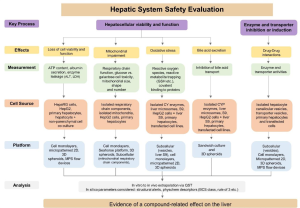 New Approach Methodologies (NAMs) based on human biology have the potential to reduce, and ideally eliminate, toxicities that arise during drug discovery and development. Pharmaceutical companies are already using NAMs in early drug development, with considerable success. However, there are areas of unmet need where NAMs might deliver more predictive power, potentially improving and expediting drug development. At present there is no overarching consensus on how NAMs may be incorporated within regulatory guidelines and numerous hurdles are hampering action. Guidance is needed especially for academic researchers and small biotech start-ups that drive NAM development, yet may be unfamiliar with the precise needs of regulators and other end users.
New Approach Methodologies (NAMs) based on human biology have the potential to reduce, and ideally eliminate, toxicities that arise during drug discovery and development. Pharmaceutical companies are already using NAMs in early drug development, with considerable success. However, there are areas of unmet need where NAMs might deliver more predictive power, potentially improving and expediting drug development. At present there is no overarching consensus on how NAMs may be incorporated within regulatory guidelines and numerous hurdles are hampering action. Guidance is needed especially for academic researchers and small biotech start-ups that drive NAM development, yet may be unfamiliar with the precise needs of regulators and other end users.
NAMs need to be included within a scientifically valid, integrated human-relevant pharmaceutical safety assessment strategy that will be acceptable to industry and regulators. With this in mind, we held a series of 5 workshops with 13 international experts (regulators, preclinical scientists and NAMs developers), to identify feasible NAMs and discuss how to use them in specific safety assessment contexts.
Participants generated four decision tree ‘maps’ showing how NAMs could be used to assess safety for the liver, respiratory, cardiovascular and central nervous systems. These organ system maps provide guidance on how specific human-relevant tests may be used in each context, as well as a template that could be applied to additional organ systems, or testing in other contexts. Maps like these have potential to guide stakeholders and generate confidence in using NAMs to complement and ultimately replace in vivo animal methods.
Converting these maps into interactive decision trees would allow users to ask specific questions and select the most appropriate NAM for their purpose, so the development of a more dynamic and user-friendly version of these maps is an important project for the future. This work could lead to greater adoption of NAMs, improved pharmaceutical productivity and, most importantly, safer medicines. The findings from this workshop have potential to contribute to implementation of the recently passed FDA Modernisation Act, which enables the use of NAMs for regulatory purposes in the US. We hope others will build on this work and use it to speed the transition to greater human relevance, which is so urgently needed.
Partners from the Alliance for Human Relevant Science included Safer Medicines Trust, Animal Free Research UK and Cruelty Free International. Cruelty Free International conceived the idea for the project and we are grateful to the Cruelty Free International Trust for funding this project and to all participants for so generously giving their time and expertise.